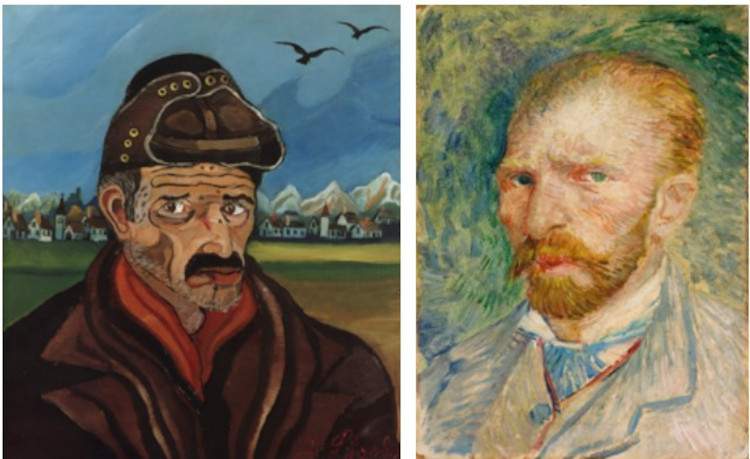At the Bonaparte Palace, Van Gogh and Ligabue's Self-Portraits in an unprecedented comparison
On the occasion of the Antonio Ligabue exhibition, which will open to the public next March 25 at the Aragonese Castle in Conversano, a Van Gogh exhibition will be hosted at Palazzo Bonaparte in Rome from March 1 to 12. Masterpieces from the Kröller-Müller Museum, an entirely new dialogue between two Self-Portraits by the two celebrated artists.
A comparison conceived by Francesco Negri to honor the work done by his father Sergio, an expert on Van Gogh, during his lifetime.
It might be difficult to imagine affinities, or even simple points of contact, between two such different authors: if Van Gogh is endowed with a superior spirit that takes him beyond reality and a literary matrix can be detected in his art, Ligabue puts his instincts in front of nature and initiates a convulsive and furious dialogue with color.
It is precisely in theuse of color, in therestlessness that pervades them and in that personal maladjustment that they manage to overcome only by painting that the reasons for the tangency between the two artists should be sought, beyond the painting technique and what they represented on canvas.
Vincent in a letter to his sister Willemien writes, “The uglier, older, meaner, sicker and poorer I become, the more I wish to redeem myself by making bright, well-patched and shining colors,” and the same is true for Ligabue, whose pain-suffocated soul breaks free from the nightmares within, initiating a convulsive and furious dialogue with color, creating masterpieces of a primitive and instinctive art and unfiltered brutality.
Van Gogh and Ligabue, excluded from a society created by men, share a loneliness without footholds that can only avert despair through painting. It is not surprising then, as this comparison documents, that they both feel the need to reproduce their image again and again, as if to give proof of their existence in a world that has marginalized them and with their piercing gaze turned to the viewer.
The two artists are united by a single desperate loneliness, a state generated by the disillusionment of believing in the goodness of nature; both see the universe for what it is and paint its brutality without filter.
Two artists who, though in different ways, with their own language and works were equally able to penetrate the soul.
Image: Left, Antonio Ligabue, Self-Portrait with Motorcycle Cap (1954 - 1955; oil on faesite board, 80 x 70 cm; Private collection); right, Vincent van Gogh, Self-Portrait (Paris, April - June 1887; oil on cardboard, 32.8 x 24 cm) © Kröller-Müller Museum, Otterlo, The Netherlands
 |
| At the Bonaparte Palace, Van Gogh and Ligabue's Self-Portraits in an unprecedented comparison |
Warning: the translation into English of the original Italian article was created using automatic tools. We undertake to review all articles, but we do not guarantee the total absence of inaccuracies in the translation due to the program. You can find the original by clicking on the ITA button. If you find any mistake,please contact us.




























